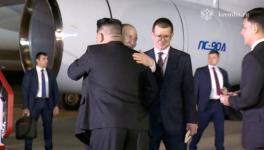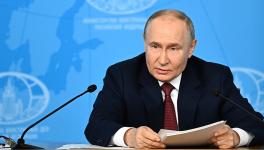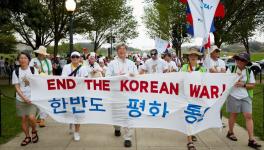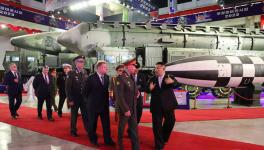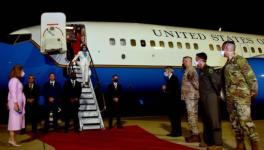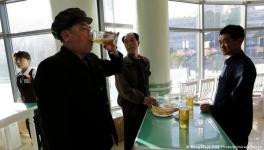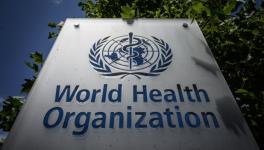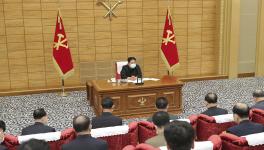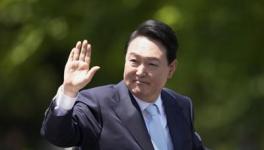North Korea Volunteers to Permanently Shut Down Missile Launch Pad
The summit between Kim Jong-un and Moon Jae-in has been marked by a sense of purpose towards restoring a sense of normalcy between the countries.
North Korean leader Kim Jong-un has agreed to “permanently” close the most important missile launch pad of the country since 2012 – the Tongchang-ri missile engine test site and missile launch facility. The offer came on the second day of the three-day summit between Kim and South Korean president Moon Jae-in in Pyongyang on September 19. Kim also agreed to carry out the process “in the presence of experts from relevant nations”.
Kim also opened a way forward for a further move towards denuclearization. He reportedly promised that should the US reciprocate by taking a corresponding step towards establishing peaceful relations with the North, the Yongbyon nuclear facility – where the nuclear material used by North Korea in the recent tests is said to have been produced – will also be closed
As Moon Jae-in and his wife were received at the Sunan International Airport in Pyongyang on the morning of September 18 by Kim and the First Lady of the North, scores of North Korean civilians – men in black suits and women dressed in their traditional colourful attire called hanbok- cheered and waved the flags of unified Korea showing the peninsula in blue over a white background.
Following a meet-and-greet with other senior North Korean officials who were present at the airport, the two heads of divided Korea paraded through the city on their way to Paekhwawon State Guesthouse, in an open roof motorcade from which they waved at the cheering crowds of thousands who had lined up on either side, chanting “Unification of Homeland”, waving flower bouquets and the Korean Unification flag under which the sports teams of the two countries have on many international sporting events marched together while participating as a single team.
After these jubilant ceremonialities, at 3:45 p.m, Moon, accompanied by the National Security Office chief Chung Eui-yong and National Intelligence Service chief Suh Hoon, had an hour-and-a-half long meeting with Kim, who was accompanied by his sister Kim Yo-jong, who is the Vice-Chairman of the central committee of the North Korea’s ruling Workers’ Party.
Explaining the agenda for the summit, Moon had said in a meeting with his senior aides on Monday, “First is removing the possibility of armed clashes, and the fear of war.. Second is facilitating North-US talks for denuclearization. This is not a matter on which we can take the lead , so (I) hope to speak frankly with Chairman Kim Jong-un to find a middle ground between the US’ demands for denuclearization and the North’s demands for ending hostilities and ensuring safety (of the regime).”
The talks between the US and North Korea had started with the Singapore summit where Donald Trump and Kim Jong-un signed an agreement. The first three points of the agreement envisaged the setting up of U.S.-DPRK relations, a movement towards building a lasting and stable peace regime in the peninsula and a commitment on the part of the DPRK to work towards the complete denuclearization of the Korean Peninsula.
North Korea is believed to have taken this sequence of statements to confirm that the establishment of peaceful relations and joint efforts by the US and North Korea “to build a lasting and stable peace regime” (which will require a separate peace treaty) will be a task that will precede “complete denuclearization.” This is a position the state has maintained for long, arguing that there will be no need for it maintain a nuclear arsenal if hostilities between US and the North cease.
The North had, just prior to the summit, taken a step towards denuclearization by dismantling of the Punggye-ri nuclear test site, parts of which, contrary to many media reports, was very much in a usable condition.
However, the demand made by US State Secretary Mike Pompeo on his last visit to the North that the latter reveal its full nuclear inventory and provide a timeline for completion of denuclearization, while at the same time refusing to officially end the Korean war, which continues to exist in absence of a peace treaty, was rejected by North Korean state, which condemned his demand to be “gangster-like”.
Reports that the US, in this period of negotiations, had been secretly carrying out with Japan military drills targeting the North, delivered a further setback back to the trust building that had taken place between the two states over the period of negotiations.
A step-by-step process of reciprocal actions between North Korea and US – where each move made by North Korea towards denuclearization will be reciprocated by US with a corresponding move towards ending hostilities and normalizing relations – was the position that the former had been advocating: a position that is also in line with the Panmunjom Declaration, in which both Moon and Kim had agreed that, “South and North Korea agreed to carry out disarmament in a phased manner, as military tension is alleviated and substantial progress is made in military confidence-building.”
Not agreeing to this formula of denuclearization, President Trump, complaining that sufficient progress had not been made by North Korea towards denuclearization, had cancelled on August 24 Pompeo’s scheduled visit to the North, a day after it was formally announced.
Despite disruptions by US, the leaders of the divided Korea has shown resolve to achieve peace
This abrupt cancellation, much to the chagrin of South Korea’s foreign minister who expressed his disappointment over a phone call to Pompeo the following day, had jeopardized the South’s plan of opening a liaison office in the North, which, it was hoping, will evolve into a permanent mission, making way to an eventual establishment of South Korean embassy in Pyongyang.
A shadow of doubt was also cast on whether Moon will choose to proceed with the current summit despite Washington’s complaints, with the New York times warning, “If Mr. Moon ignores Mr. Trump’s unhappiness with North Korea and pushes ahead with his plan.. he could run the risk of creating a rift with Washington, the South’s most important ally.”
However, the the liaison office was opened in North Korea’s border town of Kaesong on September 14, setting a full-time person-to-person contact between the two divided Koreas. Days later, on September 18, Moon attended the summit, abiding by the spirit of words he had spoken while addressing his nation on the occasion of 73rd Liberation day:
“I believe in the importance of recognition that we are the protagonists in Korean peninsula-related issues. Developments in inter-Korean relations are not the by-effects of progress in the relationship between the North and the United States.”
On the morning of 18th, before leaving to the North, Moon tweeted, in a veiled reference to the US, “What I want to achieve is peace. Not a tentative change which could be volatile dependent on international situation, but irreversible, permanent and unwavering peace, regardless of what might happen on the global arena.”
On meeting Kim, Moon reportedly said, “Spring in Panmunjom has led to the autumn in Pyongyang, so it’s time (for the summit) to bear real fruit,” to which Kim responded, “we must produce substantial results, so as to not let the people of the North and the South down.”
While the two heads of the state, accompanied by selected top officials, busied themselves in the closed door meeting at the headquarters of the Central Committee of the Workers’ Party of Korea, the First Lady of South Korea, Kim Jung-sook, paid a visit to Okryu Children’s Hospital and Kim Won Gyun University of Music.
A struggle to establish economic ties despite sanctions
Also present in the entourage of Moon were top business leaders – including the heads of Samsung, Sk, LG and Hyundai Motors – as well as representatives of South Korea’s public sector, including Electric Power Corp, Korea Railroad, Korea Tourism Organization and Korea Development bank.
Hoping find ways to develop economic ties between the two countries, despite trade sanctions against the North by the international community headed by the US, these business representatives met with North Korea’s deputy prime minister for economy, Ri Yong-nam.
One of the persons in this entourage of over 50, Shin Han-yong, the lead representative of South Korean firms that were previously running factories in Kaesong Industrial complex, told South Korea’s Yonhap News Agency, “I think the fact that I was included in the list indicates the government’s desire to discuss the restarting of the Kaesong complex with the North.. We will prepare for the reopening of the factory plant step by step, with hope for its reopening within the year.”
Much hopes had been cast on this industrial complex – inaugurated in 2004 in North Korea’s border town of Kaesong – to be a catalyst for South-North economic cooperation. However, following the missile tests by the North, in 2016, South Korea wound up the operations in this complex which now remains shuttered.
More ambitious than this plan of restarting factory operations in this complex is Moon’s plan to develop an “H-shaped economic belt”, connecting economic zones on the two sides of the border on the east coast and the west cost, with another line connecting the two routes on the east and the west together through the Demilitarized Zone – an innocuous word given to one of the world’s most militarized border.
However, until the sanctions on the North restricting business activities by South in the country that bring cash flow to the former are eased, arriving at concrete agreements regarding economic cooperation between the two countries will be an enormous challenge.
Following the talks on the first day of the summit, Moon and his wife were hosted at a performance at the Pyongyang Grand Theater by North Korea’s Samjiyeon Orchestra – known for performances of classical music – following which a welcome dinner was hosted for the entire entourage from the South at the iconic banquet called the ‘Mokran House’.
With Kim having promised by the end of the second day of the summit to shut-down a launch pad, with a further offer to close a nuclear material production facility should the US reciprocate, the ball is now in the latter’s court.
Get the latest reports & analysis with people's perspective on Protests, movements & deep analytical videos, discussions of the current affairs in your Telegram app. Subscribe to NewsClick's Telegram channel & get Real-Time updates on stories, as they get published on our website.









